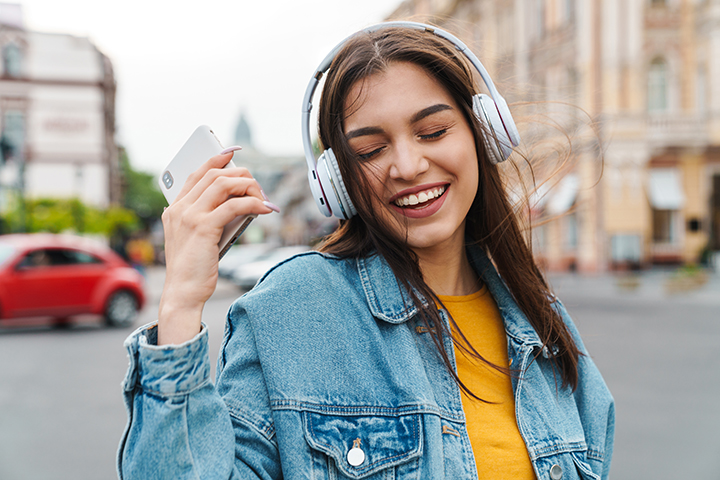Large parts of Northern India for weeks are choking on toxic air, coughing, wheezing and complaining. No wonder then that sales of air purifiers are rising in India, a country which last year had 14 of the 20 most polluted cities in the world.
“I feel super energetic as soon as I reach my office in Gurugram — the quality of poor air outside makes one so lethargic otherwise,” says Ashwin Baruah, who works in a Gurugram-based e-commerce company that recently installed a YOGa Clean Air Solutions purifier at its premises. The purifier shows that the air quality index (AQI) is ‘good’ in Baruah’s office when it is ‘hazardous’ outside, according to pollution trackers.
After battling the coronavirus pandemic, customers want air purifiers that can contain bacteria, viruses, and allergens besides cleaning the air. Products that meet these requirements are expensive and have features like HEPA filters, which have a particle retention rate of 99.95 per cent, and UV air purification, which reduces airborne pathogens and microorganisms.
This shift is evident in the market trends where consumers are looking for high-end products that meet these requirements, featuring attributes like HEPA grade 13 or 14 filters, UV air purification, and more. While Delhi and its neighboring areas are certainly known for their severe pollution, many other Indian cities are not far behind in terms of air quality. In fact, 39 Indian cities make it into the list of the top 50 most polluted cities in the world. Some examples include Cuttack with an AQI of 464, Meerut with an AQI of 450, Patna with an AQI of 413, Puri with an AQI of 378, Jaipur with an AQI of 257, and Lucknow with an AQI of 253 , as per real-time rankings of AQI.
According to Deepak Bansal, Executive Vice President, Havells India, “Several factors will fuel the growth of the air purifier market in India. The increasing incidence of allergies, including those caused by pollen, is driving the demand for portable air purifiers. Type-V (HEPA + Carbon + Ionizer + UV Light + Electrostatic) purifiers dominate the market. The residential market holds half of the India air purifier market and the growing middle class with a higher willingness to Invest in Air Purification Products boosting online sales.”
What’s Trending
The quality of air has a direct impact on the quality of life. Some of top trending air purifier brands include Daikin Industries Ltd, Dyson Ltd, Koninklijke Philips NV, Honeywell International Inc and Panasonic Corporation are the major companies operating in the India Air Purifier Market. There are others such as Whirlpool, Havells, Kent, IQ Air, Samsung and Xiaomi Corp.
The general difference between cheap and expensive air purifiers is the kinds of pollutants they can remove from the air, the room area they cover, and additional features.
According to Dr. Mahesh Gupta, CMD KENT RO Systems Ltd, “Air purifiers demand is not just restricted to the Delhi-NCR region, but there is a demand from neighbouring states and cities including Chandigarh, Ludhiana and Jalandhar as also from various regions of Haryana. Amidst deteriorating air quality, air purifiers have become a staple in most households. In the past 4-5 days, we’ve witnessed a 15-20% increase in demand, as people anticipated the need for a solution to combat the polluted air.” He advises that the “best way to buy an air purifier begins with assessing your needs. Start by measuring the size of the room you want to purify, as this will determine the appropriate purifier size and capacity. Calculate the room’s square footage and consider the Air Changes per Hour (ACH) you desire for efficient air purification. Look for purifiers with a CADR (Clean Air Delivery Rate) that matches your room size and select one with a HEPA filter for effective allergen removal.”
The Indian Air Purifier Industry can be categorized by technology into five types: Type-I (HEPA + Carbon), Type-II (HEPA + Carbon + Ionizer), Type-III (HEPA + Carbon + UV), Type-IV (HEPA + Carbon + Electrostatic), and Type-V (HEPA + Carbon + Ionizer + UV Light + Electrostatic). There is a growing trend in India’s air purifier market towards Type-V purifiers, which incorporate HEPA, Carbon, ionization, UV light, and electrostatic technologies. These multi-technology air purifiers are highly effective in eliminating various airborne pollutants, including particulate matter, bacteria, and volatile organic compounds (VOCs). The surge in demand for Type-V air purifiers can be attributed to the increasing awareness of health risks associated with air pollution and the rising prevalence of respiratory ailments and allergies. The growth of the air purifier industry is further driven by government initiatives such as the National Clean Air Program (NCAP), which aims to reduce particulate matter levels by 20-30% in 132 cities by 2024.
A recent technology which is making waves is the Clean Air Bubble technology used by YOGa Clean Air which limits exposure to air pollution within the safety parameters recommended by the World Health Organization (WHO). This innovation has evolved from the fusion of traditional ventilation techniques with the advancements in modern filtration science. Says Rahul Sehrawat- Head IAQ YOGa Clean Air, “Recognising that indoor environments can be as, if not more, polluted than outdoor spaces, the YOGa Clean Air Bubble (Y-CAB) system has demonstrated its effectiveness across various conditions in numerous Indian cities and throughout different seasons. Independently tested and verified by IIT Delhi, the system has proven its reliability in diverse settings, including residential and commercial spaces, gyms, yoga and fitness centres, schools, and hospitals.”
In residential settings, the Y-CAB system serves as an integrated air cleaning and ventilation system for the entire house. Unlike conventional standalone air purifiers, which typically address areas of a few hundred square feet, even the smallest Y-CAB system can cover a carpet area ranging from 1500 to 2000 square feet, depending on the design and architecture of the house. While the installation process is not plug-and-play, it can be completed in three hours by trained technicians. This system is intentionally designed to operate continuously, consuming only 70-90 watts of power per hour. Essentially, it serves as a window, facilitating the influx of fresh and clean air into the house around the clock.
Priced at approximately 1.5 lakhs, the system includes an annual clean air subscription. This subscription not only covers system maintenance but also guarantees air quality within WHO safe limits throughout the year, regardless of outdoor air quality. Whether in summer or winter, this system ensures that your lungs remain healthy, even in one of the world’s most polluted cities.
Should an air purifier be paired with a humidifier? Says KENT’s Mahesh Gupta, “Whether to pair an air purifier with a humidifier depends on the specific needs of your environment. Air purifiers primarily clean the air by removing particles and pollutants, while humidifiers add moisture to the air. If you live in a dry climate or experience discomfort from dry air, a humidifier can be beneficial for your comfort and respiratory health. However, they serve different purposes, so it’s not always necessary to pair them. Assess your indoor air quality and personal comfort requirements to decide if a combination of both is suitable.”
How does one rate the best Air Purifiers in India? This can be done on the basis of filtration Capability and filters used. This includes the filters used (HEPA, activated carbon, UV, etc.) and their efficiency in removing pollutants. Next come features and specifications. This includes room coverage, CADR (Clean Air Delivery Rate), noise levels, and additional features such as auto mode, intelligent connectivity, etc. Ongoing costs also has to be kept in mind. This includes the cost of replacement filters and any other maintenance expenses. What also matters is product quality, reliability, and warranty. Overall customer experience includes customer satisfaction, ratings and reviews, and the brand’s reputation.
There are different air pollutants. Particulate matter includes microscopic particles such as dust, pollen, and pet dander. Volatile Organic Compounds (VOCs). These are toxic gases emitted by everyday household products such as paints, cleaning agents, and personal care products. Microbes include bacteria, viruses, and other microorganisms that can cause illness. Odours include unpleasant smells from cooking, smoking, pets, and other sources. Smoke includes second-hand and wildfire smoke, which can harm respiratory health.
How should one take care of an Air Purifier to improve its efficiency? According to Niyati Bhatt, a 40 year old Delhi based homemaker, “To ensure that your air purifier is operating at its best, it’s essential to replace the filters regularly. The replacement frequency will depend on the type of air purifier and its usage. Regular cleaning of the air purifier, including the filters and exterior, can help improve its efficiency and extend its lifespan. I change the filters twice a year.”
The frequency of filter replacement will depend on the type of air purifier, the usage, and the type of filters used. On average, HEPA filters should be replaced every 6-12 months, while activated carbon filters may need to be replaced more frequently, typically every 3-6 months. Avoid placing the air purifier near sources of pollution. To avoid re-circulating pollutants, avoid placing the air purifier near sources of pollution, such as near cigarette smoke or cooking areas.
What is the best way to buy an air purifier? According to Deepak Bansal, Executive Vice President, Havells India, “In the online marketplaces, there are two major concerns regarding air purifiers. The first issue revolves around users finding the air purifiers they’ve purchased is not effective enough. The second concern is related to pricing. On one hand, if you purchase an air purifier with a Clean Air Delivery Rate (CADR) lower than what your space demands, it may not sufficiently purify the air. On the other hand, if you invest in an air purifier with a higher CADR than necessary, you might be overspending on a product that exceeds your requirements. Thus, it’s important to choose an air purifier that precisely meets your needs by assisting you in calculating the required CADR for your room.”
PRICE CHART
| Brands | Price (Rs) |
| Yoga Air | 1.5 lakhs |
| LEVOIT Air Purifier | Rs.24,999 |
| SHARP Room Air Purifier | Rs.9,999 |
| Dyson Cool Formaldehyde Air Purifier | Rs.49,900 |
| Proscenic A9 Air Purifier | Rs.10,990 |
| Daikin MC40XVM6 Air Purifier | Rs.18,990 |
| Philips Air Purifier – Series 2000 | Rs.17,990 |




